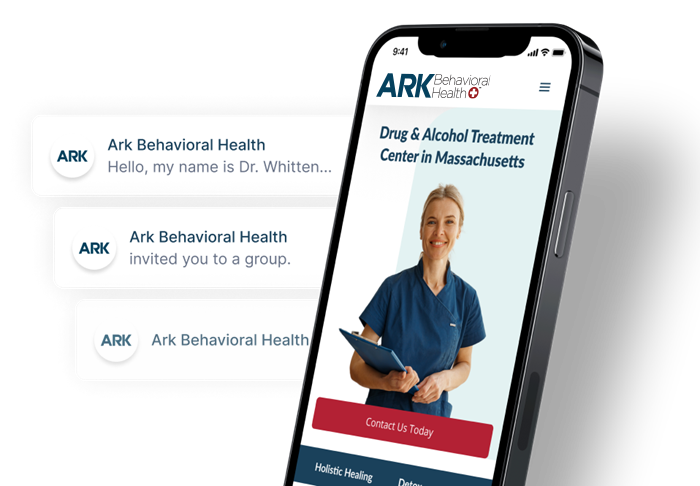Xanax (Alprazolam) Abuse & Addiction | Side Effects, Withdrawal Symptoms, & Treatment Options

Doctors often prescribe Xanax to treat insomnia and anxiety disorders such as panic disorder, obsessive-compulsive disorder, and social anxiety disorder. When taken as prescribed, the medication can provide great relief.
However, some people abuse Xanax by taking too much of it or taking it too often. Over time, Xanax abuse can lead to addiction or worse. Fortunately, you or your loved one can break free from Xanax addiction by attending a substance abuse treatment program.
What Is Xanax?
Xanax is the brand name for a central nervous system depressant called alprazolam. It belongs to a group of medications known as benzodiazepines (also called “benzos”).
Like all benzodiazepines, Xanax eases anxiety and relaxes the muscles by increasing the effects of a neurotransmitter (brain chemical) called gamma-Aminobutyric acid (GABA).
While it’s most commonly prescribed to treat insomnia and anxiety disorders, it’s also used to calm people facing stressful events, like the death of a loved one.
Most doctors only prescribe Xanax for a short period of time or for occasional use (such as during a panic attack).
Side Effects Of Xanax
As with all prescription medications, Xanax comes with some side effects. The most common side effects include:
- drowsiness
- dizziness
- dry mouth
- muscle weakness
- mood swings
- memory problems
- confusion
- trouble concentrating
- poor coordination or balance
- slurred speech
- lack of interest in sex
- nausea and vomiting
- changes in appetite or weight
- headache
Learn more about the Short-Term & Long-Term Side Effects Of Xanax
Xanax Abuse
Sometimes, people abuse Xanax to feel more calm and relaxed. Xanax abuse occurs when you take the drug without following a doctor’s instructions.
For instance, you may:
- take it without a prescription
- take it at higher doses than prescribed
- take it more frequently than prescribed
- take it in a manner not prescribed, such as snorting it, injecting it, or taking it with other drugs like alcohol or opioids
Xanax Addiction
Continued abuse of Xanax can lead to addiction, also called substance use disorder (SUD). You can also become addicted if your doctor instructs you to take Xanax for a long period of time or at high doses.
When you’re addicted to Xanax, you develop a tolerance to it. That means you’ll need higher and higher doses to achieve the drug’s desired effects.
Addiction can also cause physical dependence. In other words, your body will rely on the drug to function normally; if you try to stop using it, you’ll experience unpleasant withdrawal symptoms.
Signs Of Xanax Abuse & Addiction
If you’re wondering whether you or someone you know is struggling with Xanax abuse or addiction, look for the following signs:
- needing higher doses of the drug to feel the same effects that were once felt at lower doses
- withdrawing from friends and family members to spend more time getting and using the drug
- falling behind at work or school
- spending lots of money on the drug
- feeling unable to complete daily tasks without the drug
- feeling unable to quit the drug despite wanting to
- experiencing withdrawal symptoms when trying to quit the drug
- feeling irritable or moody
- visiting multiple doctors to get multiple Xanax prescriptions (also called “doctor shopping”)
- sleeping more than usual
Can You Overdose on Xanax?
It’s possible to overdose on Xanax if you take more of it than your doctor prescribed.
Signs of overdose include:
- confusion
- depression
- joint pain
- constipation
- difficulty passing urine
- difficulty breathing
- yellowing of the skin or eyes
- severe problems with coordination or balance
- hallucinations (seeing, hearing, or feeling things that aren’t there)
- trouble talking or unusual talkativeness
- trouble staying awake
- seizures
- loss of consciousness
- coma
Call for emergency services immediately if you or a loved one experiences these signs; a Xanax overdose can be fatal.
Learn more about Xanax Overdose
Xanax Withdrawal Symptoms
If you try to stop taking Xanax without the guidance of a medical professional, you may experience withdrawal symptoms.
These mental and physical withdrawal symptoms may include:
- anxiety
- insomnia
- irritability
- aggression
- difficulty breathing
- blurry vision
- muscle tension
- aches and pains
- heightened sensitivity to sounds and lights
- tremors
- numbness and tingling in the hands, feet, or face
- nightmares
- paranoia
- depression
- suicidal thoughts
Xanax Addiction Treatment Options
Even though Xanax is a prescription drug, it can be extremely difficult to stop using. If you’re trying to quit the medication, seek professional help at an addiction treatment center.
Inpatient & Outpatient Treatment
These centers offer both inpatient and outpatient programs. Inpatient programs provide 24/7 monitoring and care for people with severe addictions. Outpatient programs allow people with mild addictions to receive regular care while still living at home.
Learn more about Inpatient Addiction Treatment
Medical Detox
Whether you choose an inpatient or outpatient program, a team of medical professionals will help you safely detox from Xanax. In most cases, they’ll gradually reduce your dose in a process called tapering. Tapering helps prevent or decrease withdrawal symptoms.
You may also be temporarily given a longer-acting benzodiazepine, such as Klonopin or Valium, to make detoxification easier.
Learn more about Medical Detox
Therapy & Other Treatment Options
Once you detox, you’ll have access to a variety of services that will help you recover and avoid relapse, which may include:
- Cognitive behavioral therapy, in which you’ll learn healthy coping skills from a licensed mental health professional
- Group therapy, in which you can share your experiences with people who are facing similar challenges
- Psychiatric care, as some people who are addicted to Xanax benefit from non-addictive medications that treat mental health issues like anxiety and depression
- Classes and groups that focus on healthy activities such as meditation, yoga, and exercise
If you or a loved one struggles with Xanax abuse, reach out to an Ark Behavioral Health specialist to learn more about our treatment programs.
Xanax FAQ
What Are Xanax Bars?
The term “Xanax bar” refers to a rectangular tablet that contains the benzodiazepine alprazolam. Rectangular bars sold under the brand name Xanax are white. Generic versions are green, yellow, or blue.
Regardless of color, all Xanax bars contain 2 milligrams of alprazolam. Each bar is scored in three places so you can break it into smaller doses if necessary.
Xanax bars are the strongest immediate-release form of alprazolam. That’s why they’re often abused.
Learn more about Xanax Bars
How Can You Spot Fake Xanax?
To identify a fake Xanax pill, compare it to an authentic pill (or at least a picture of one).
If the pill varies in color, shape, or size, it’s probably a fake. Counterfeit drugs also tend to have faded logos, uneven appearances, and rougher edges than real drugs.
Since fake Xanax pills pose a number of health risks, including overdose and death, it’s best to assume that any Xanax pill not from a licensed pharmacy is a fake.
Learn more about how to spot Fake Xanax
Are There Drugs Like Xanax That Aren’t Addictive?
Drugs that can reduce anxiety without posing a high risk of addiction include:
- antidepressants, particularly selective serotonin reuptake inhibitors (SSRIS) like Zoloft and Prozac
- antihistamines, particularly hydroxyzine (Vistaril) and diphenhydramine (Vistaril)
- buspirone (BusPar), an anxiolytic (anti-anxiety) medication
Some people find that these medications take longer to work and/or produce milder effects than Xanax. However, they’re much less likely to be abused or cause addiction.
Learn more about Xanax Alternatives
Can You Inject Or Smoke Xanax?
While some may choose to modify Xanax tablets for smoking or injecting, the medication itself is not suitable for use by either method.
If Xanax is injected the suspended solids in the injection mixture can cause serious medical issues like infection or amputation.
It’s less well known how smoking might impact the effect that Xanax has on the body, but it’s generally thought that much of the medication’s potency is lost in the process.
Read the dangers of Smoking & Injecting Xanax to learn more
Can You Snort Xanax?
Yes. Some people abuse Xanax by crushing the tablets into a powder and snorting it. This behavior poses a number of serious health risks, including nasal damage, lung infection, HIV, Xanax addiction, and overdose.
Learn more about Snorting Xanax
Is It Safe To Take Xanax While Pregnant?
Taking Xanax while pregnant may increase your baby’s risk of cleft lip, cleft palate, floppy infant syndrome, and neonatal abstinence syndrome (NAS).
However, if you’ve been prescribed Xanax to treat anxiety, remember that untreated anxiety can also cause problems during pregnancy.
Talk to your doctor about whether you should use Xanax while pregnant. They may recommend switching to less risky treatment methods such as cognitive behavioral therapy, antidepressants, and exercise.
Learn more about Xanax & Pregnancy
What Are The Effects Of Xanax On The Brain?
Xanax increases the effects of a neurotransmitter (brain chemical) called gamma-Aminobutyric acid, or GABA. It does so by attaching to GABA receptors in the brain. Increased GABA slows down your brain activity and causes you to feel calm and sleepy.
Learn more about How Xanax Works In The Brain
How Much Xanax Does It Take To Black Out?
You face the risk of a blackout if you take any amount of Xanax higher than the amount you were prescribed. You can also black out if you mix Xanax with other benzodiazepines or alcohol.
Learn more about Xanax Blackouts
Does Xanax Cause Weight Gain?
Like many drugs, Xanax can cause weight gain in some people and weight loss in others.
You’re more likely to gain weight on Xanax if you:
- feel extreme drowsiness, which is a side effect of Xanax that can make it difficult to get a healthy amount of physical activity
- experience premenstrual dysphoric disorder (PMDD), which can increase your appetite while you’re taking Xanax
Read Does Xanax Cause Weight Gain Or Weight Loss to learn more
Does Xanax Help With Depression?
No. In fact, because Xanax is a central nervous system (CNS) depressant, it can cause depressive symptoms such as hopelessness, loss of interest in activities you once enjoyed, and suicidal thoughts.
You’re more likely to experience these symptoms if you abuse Xanax (use it in a manner not prescribed by your doctor).
Read Does Xanax Help With Or Cause Depression to learn more
Are There Refill Laws For Xanax?
Yes. Because Xanax is a controlled substance, prescribing practitioners must follow state and federal laws when refilling prescriptions for it.
Learn more about Xanax Refill Laws
Can Xanax Cause Erectile Dysfunction?
Like other prescription medications, Xanax may cause erectile dysfunction (ED) because of how the drug affects the central nervous system (CNS). However, there are many reasons why ED may occur.
Learn more about Xanax Side Effects Sexually
Does Xanax Lower Blood Pressure?
It can if you’re taking it as prescribed for anxiety. For many people, anxiety raises blood pressure. Xanax can treat not only the psychological effects of anxiety, but also the physical effects, including high blood pressure.
Learn more about the relationship between Xanax & Blood Pressure
Is It Safe For The Elderly To Take Xanax?
Although Xanax does not cause dementia or Alzheimer’s, it may be a risk factor. Both dementia and Alzheimer’s are associated with cognitive decline that is severe enough to affect daily life.
Even in short-term use, Xanax can cause confusion and impaired coordination. This can lead to an increased risk of falls and fractures.
Learn more about Xanax Effects & The Elderly
Is Xanax An Opioid?
Although Xanax and opioids are both controlled substances, Xanax is not an opioid. Xanax is a benzodiazepine, which is a class of drugs used to treat anxiety disorders, seizure disorders, and insomnia. Opioids, also known as narcotics, are used to treat chronic and severe pain.
Read Is Xanax An Opioid? to learn more
How Long Does Xanax Stay In Your System?
Xanax stays in your system anywhere between one to five days after it is taken. On average, it takes about two-and-a-half days to be eliminated from the body.
Learn more about Xanax Detection Times
What Is A Xanax Hangover?
A Xanax hangover is a condition where you experience mild withdrawal symptoms the day after taking Xanax. Common symptoms include headache, fatigue, blurry vision, and nausea.
Learn more about Xanax Hangovers
Can You Take Xanax Alongside ADHD Medications?
It’s likely not recommended to take Xanax if you have ADHD and a prescription for a stimulant medication like Ritalin or Adderall. Mixing stimulants and depressants can decrease the effectiveness of each drug, as well as increase the risk of addiction.
Learn more about Xanax Abuse & ADHD
Can You Take Xanax For Bipolar Disorder?
Bipolar disorder is a serious mental health condition that may require long-term treatment. Xanax is likely not recommended as long-term treatment because of its potential for abuse, including withdrawal symptoms that could worsen hypomanic and depressive episodes.
Learn more about Bipolar Disorder & Xanax
Is It Dangerous To Use Xanax While Breastfeeding?
Xanax (alprazolam) isn’t the safest drug to use while breastfeeding because a significant amount of Xanax passes into breast milk.
Using Xanax while nursing can cause your infant to:
- be irritable
- become drowsy
- become sedated
- have breathing problems
- lose weight or gain weight poorly
If you abuse Xanax while breastfeeding, your baby may become physically dependent on it. If you stop using it or stop nursing, your baby could have withdrawal symptoms, such as fussiness, excessive crying, and sleep disturbances.
Learn more about the Dangers Of Xanax Abuse While Breastfeeding
What Is Xanax Called On The Street?
Xanax (alprazolam) has developed a variety of common street names including xannies/zannies, z-bars/zanbars, handlebars, planks, ladders, French fries, totem poles, footballs, Upjohn, and others.
Learn more about Xanax Street Names
What Happens If You Take Xanax On An Empty Stomach?
Taking Xanax on an empty stomach can make the side effects of Xanax, such as sedation, drowsiness, and impairment, more intense. If you take Xanax on an empty stomach to get high, you may be suffering from a Xanax addiction.
Learn more about Taking Xanax On An Empty Stomach
Is It Safe To Exercise While Taking Xanax?
For most people, it’s safe to exercise while taking Xanax, but you have to be careful.
Xanax (alprazolam) can make you drowsy and decrease your energy levels. You might not have the endurance to work out as much as you’d like, so don’t push it. But you can still have a beneficial workout while taking Xanax.
Learn more about Working Out On Xanax
Written by Ark Behavioral Health Editorial Team
©2024 Ark National Holdings, LLC. | All Rights Reserved.
This page does not provide medical advice.
Healthline - How to Recognize and Treat Xanax Addiction
U.S. National Library of Medicine: MedlinePlus - Alprazolam
WebMD - Xanax XR Oral: Uses, Side Effects, Interactions, Pictures, Warnings & Dosing


Questions About Treatment?
Ark Behavioral Health offers 100% confidential substance abuse assessment and treatment placement tailored to your individual needs. Achieve long-term recovery.
100% confidential. We respect your privacy.
Prefer Texting?
Our friendly support team is here to chat 24/7. Opt out any time.







 Learn More
Learn More








